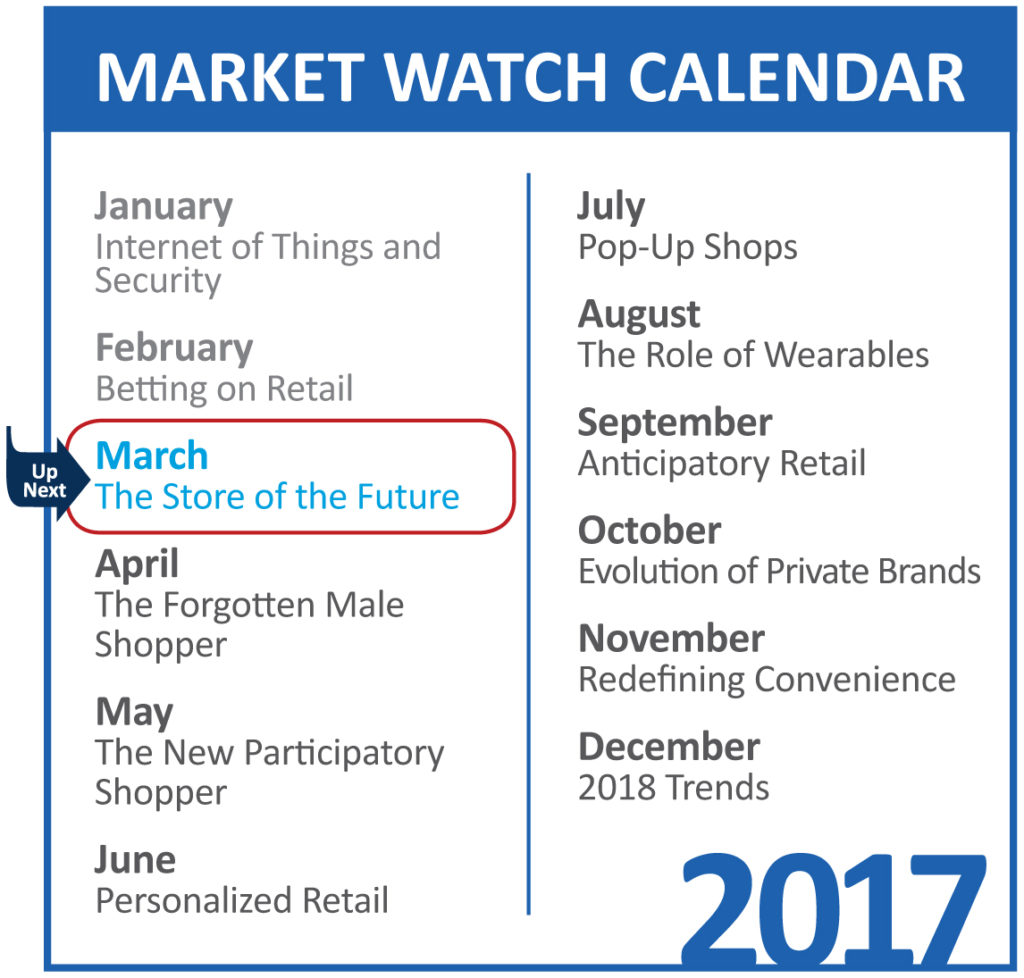The grocery store, as we know it today, turned 100 years old in 2016.
For much of that time, the brick-and-mortar model we’re all familiar with stood largely unchallenged. But those glory days are over. In just the last five years, the number of e-commerce grocery competitors has grown at unprecedented rates. And now it’s not just grocery that online innovators are after. E-commerce takeout and delivery services are also on the rise and threatening to further eat into what was once brick-and-mortar’s domain.
Why is e-commerce placing such a big bet on America’s dinner plate? According to Carl Jorgensen, Director of Global Thought Leadership—Wellness for Daymon, it’s part of a larger trend toward convenience. “Consumers’ expectations around what is convenient has changed because of their online experiences,” he says. “Everything from paying bills to sending a birthday card has become fast and easy. With the advent of same-day delivery in many cities around the world, the definition of convenience has become ‘right now.’ Grocery and food retailers now have no choice but to meet these new expectations.”
Are traditional retailers and brands ready to compete for their share of the pie? To find out, Retail News Insider put three growing services to the test.
Grocery Delivery Goes Head-to-Head
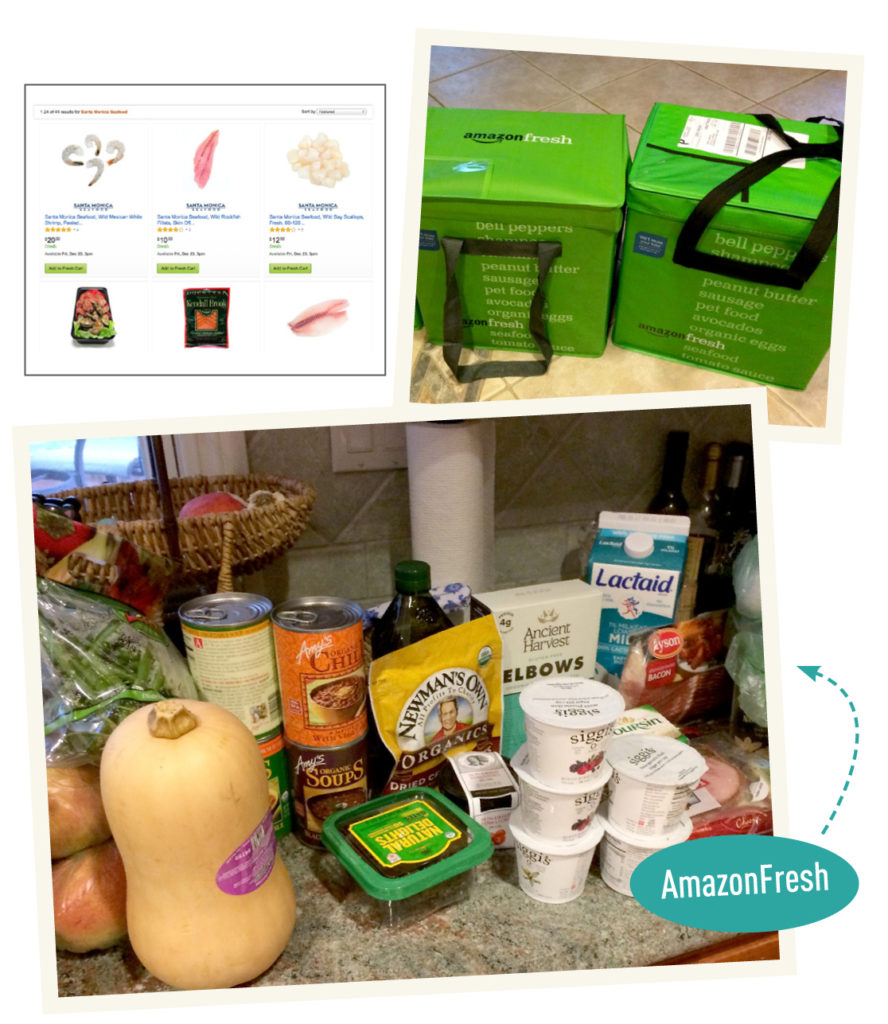 The Online Innovator: AmazonFresh
The Online Innovator: AmazonFresh
The Premise: Groceries ordered and delivered from one of the world’s largest e-commerce retailers, Amazon.
The Cost: $99 per year or $14.99 per month for Amazon Prime members. (Amazon Prime membership is $99 per year.)
The Experience: Ordering through the Amazon website was simple and intuitive (you can also use the app). We got started by reserving a delivery time, choosing a 3-hour unattended delivery window. We were then able to complete our shopping list by browsing categories or searching by product name. Products that were out of stock or not available until a certain date were labeled as such, giving us the option to change our delivery window.
On the delivery day, the order was delivered via the U.S. Postal Service well within the delivery window. The order was packed in reusable, temperature controlled AmazonFresh-branded totes. All items were received in good condition and exactly as ordered.
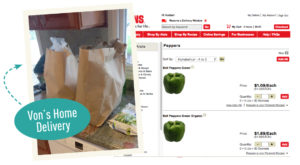 The Brick-and-Mortar Alternative: Local Supermarket Grocery Delivery
The Brick-and-Mortar Alternative: Local Supermarket Grocery Delivery
The Premise: Groceries ordered online and delivered from Von’s, a local supermarket chain in Southern California.
The Cost: $12.95 for orders under $150 and $9.95 for orders over $150. Special discounts and free shipping promotions offered regularly.
The Experience: Like Amazon, we had the option to order through the Von’s website or a dedicated delivery app. We used the website and again began by reserving a delivery time. All options were for attended delivery and we chose a one-hour window. Similar to Amazon, it was easy to shop by aisle or category, or by searching for keywords. There was no clear stocking information, and upon checking out, we were asked to select a substitution preference (different brand, different size or no substitution) for each item in our order.
On the day of delivery, a refrigerated Von’s grocery delivery truck arrived near the end of the reserved one-hour window. The friendly and courteous driver brought the items to the front door in large plastic bins, then unloaded them into the kitchen. Before leaving, he requested a signature and provided an itemized receipt, which noted a couple of substitutions as well as two out-of-stock items that could not be delivered.
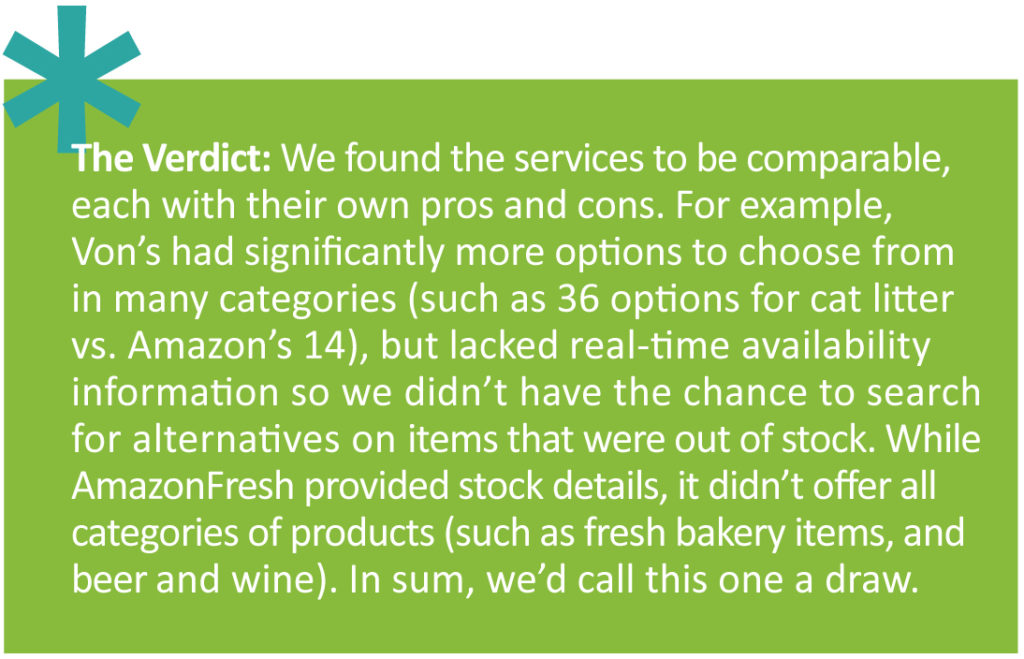
Meal Kit Matchup
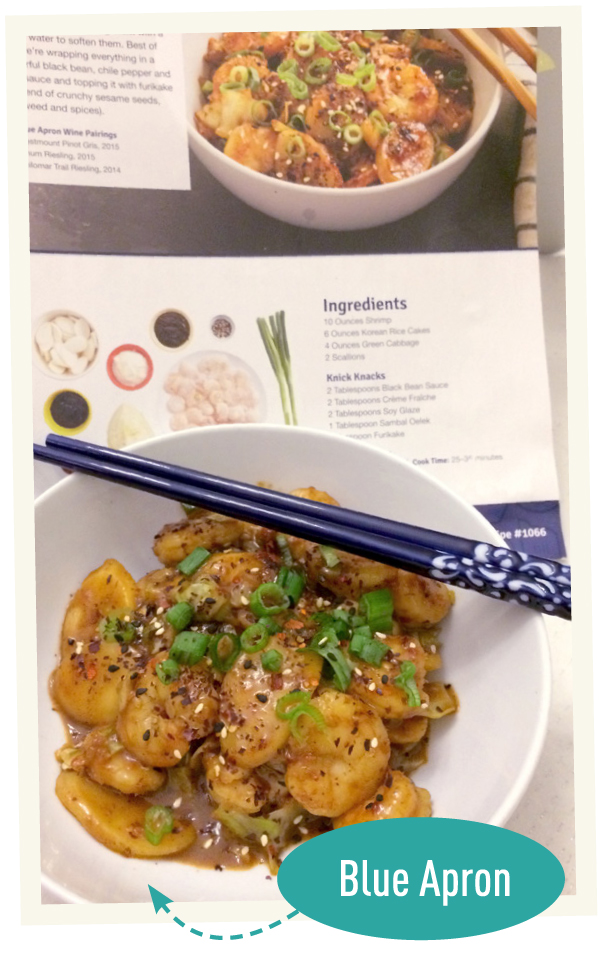 The Online Innovator: Blue Apron Meal Delivery Service
The Online Innovator: Blue Apron Meal Delivery Service
The Premise: An online service delivering all of the ingredients to prepare three seasonally-inspired recipes at home each week.
The Cost: $59.94 for three meals for two people, per week. (Subscription required.)
The Experience: We were given six meals to choose from for delivery the following week. Options included three vegetarian recipes and three containing meat or seafood. Not all combinations of meals were available together, however. In the end, we chose all three “omnivore” recipes.
The shipment arrived on the prescheduled date, delivered to the doorstep in a polystyrene cooler. All ingredients were fresh and well packaged. The first recipe we tried out was for spicy shrimp & Korean rice cakes. The estimated cook time on the recipe card was 25-35 minutes. But given the number of ingredients to assemble and prep, in reality, it took us about 40-45 minutes from start to finish.
Though the final dish was tasty, the portions felt a bit small. We were also left wanting more vegetables to offset the somewhat salty sauce. The two other meals, cooked on subsequent nights, were more satisfying.
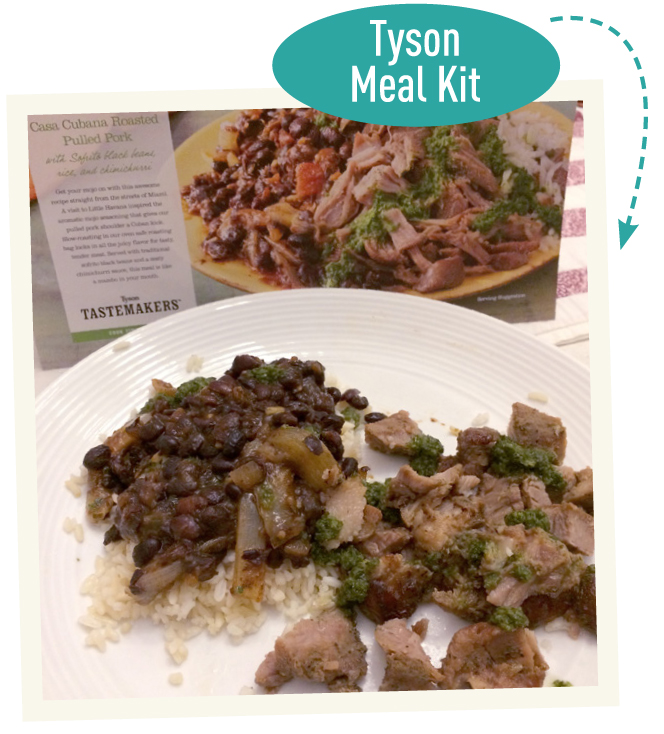 The Traditional CPG Alternative: Tyson Meal Kits
The Traditional CPG Alternative: Tyson Meal Kits
The Premise: All-in-one meal kits available directly from your favorite retailer.
The Cost: $9.99-$19.99 for a meal for two to four, depending on the product chosen.
The Experience: We chose a meal from the Tyson Tastemaker line, available through AmazonFresh—and the only retailer or CPG meal kit we could find in our area. (Though research confirms that Tyson, Campbell Soup Co., ConAgra and other well-known CPGs do offer similar kits at retailers in other areas of the United States.)
There were seven meals to choose from. We went with the Casa Cubana Roasted Pulled Pork, which was $19.99 for a two-to-three serving kit. Upon opening the box, we were pleasantly surprised to find all of the ingredients neatly in their own pouches and already prepped for cooking. The instructions were simple and easy to follow, and much of the estimated 60-minute cook time turned out be wait time, so we were able to do other tasks.
Both diners enjoyed this meal and felt the portions were ample. We even had a small serving of leftovers for the next day.
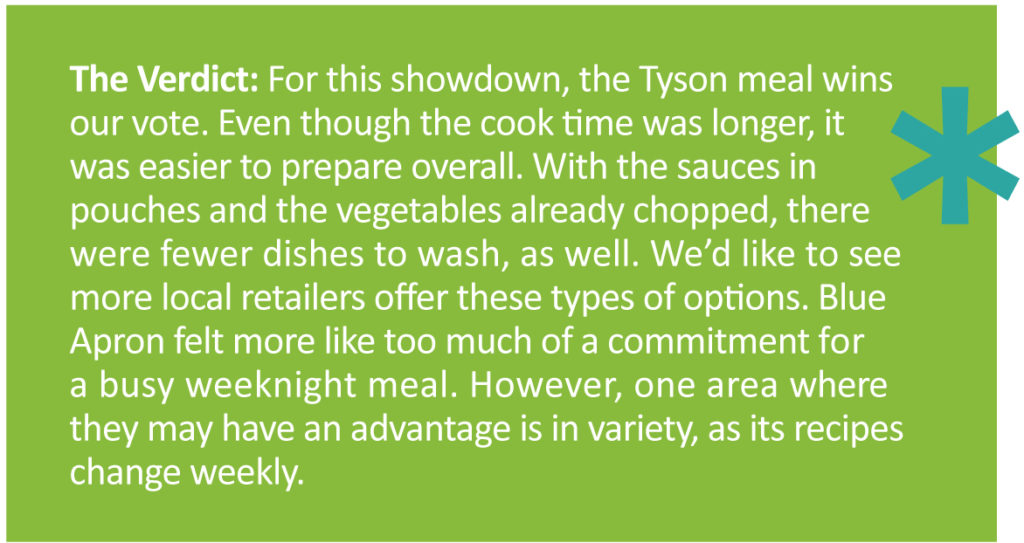
Bonus Round: Takeout and Delivery Services
Our goal with this final part of our investigation was to compare an online takeout ordering and delivery service to one offered by a well-known chain of brick-and-mortar restaurant. However, even though we live in a large metropolitan area, we were unable to find any large chains (other than pizza) willing to deliver. Strike one, brick-and-mortar! Undeterred, we decided to compare two online services to see how they stacked up to each other—and what those big chain restaurants might be able to learn from them.
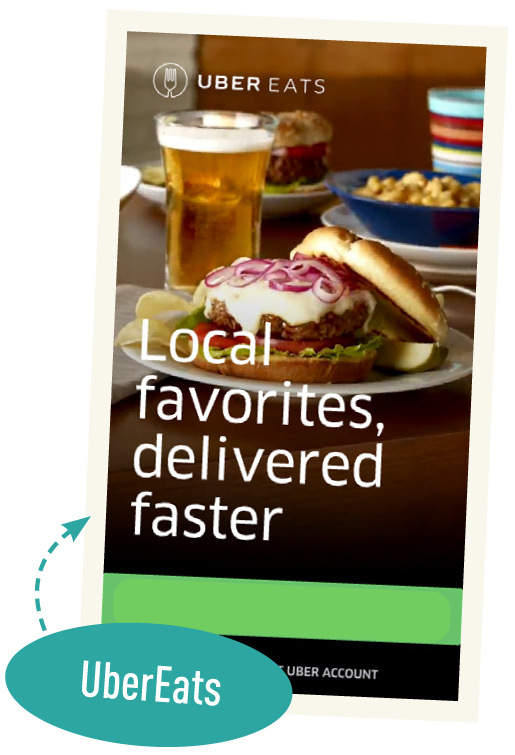 UberEats
UberEats
The Cost: $4.99 booking fee (plus tip).
The Experience: Navigating the website online was easy. They did a nice job of displaying the various restaurants, the meal options and prices. We didn’t find any minimum order requirements, which made it simple. You order what you want and no more.
We chose to order from a new-to-us restaurant with good online reviews. As soon as the order was placed, we were kept informed of the progress with an online tracker. The order arrived just a few minutes before it was due. The only negative with this option was that we couldn’t include tip for the driver when the order was placed. (Fortunately we had cash!)
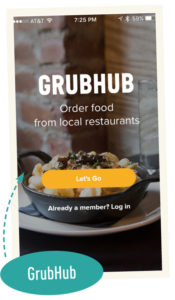 GrubHub
GrubHub
The Cost: Varies depending on the restaurant chosen—ranging from free delivery, a flat $3.99 fee or 15 percent of the order.
The Experience: As with UberEats, GrubHub can be accessed online or through an app. The selection process was also similar, though GrubHub had a greater variety of restaurants, ranging from fast food burger joints and sandwich shops to more upscale local eateries. However, unlike UberEats, most restaurants had minimum orders—ranging from $10 to $25.
The payment process was straightforward and easily tracked online. Delivery was nearly exact to the estimated time. The food itself was delicious and the portions quite large, although this was somewhat expected given the order minimums.
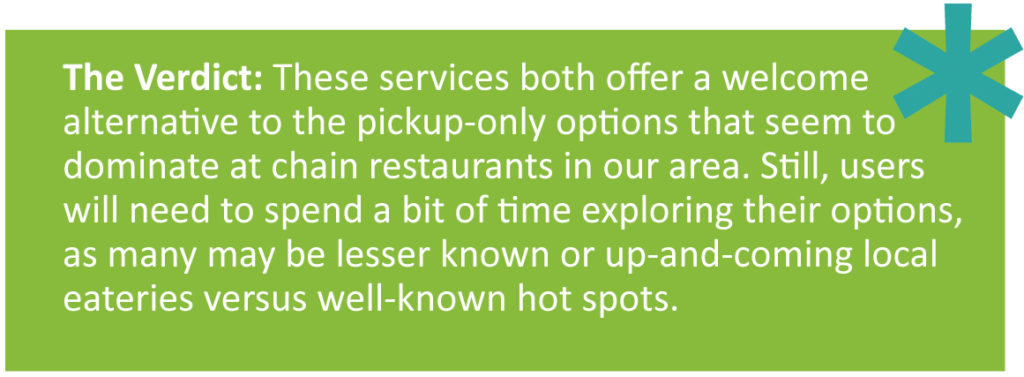
The Final Word
As our experiences revealed, there are some areas where online innovators are leading the way and others where traditional retailers or brands still have a thing or two to teach them. This ability to dabble in both the online and offline worlds is a must in today’s market, says Jorgensen.
“It’s true that we exist in a physical world and like to examine products in person, which is a built-in advantage that brick-and-mortar retailers should take advantage of. However, they cannot rest on that advantage,” he warns. “Advances in virtual reality and augmented reality will enable online retailers to continuously elevate the shopping experience. Ultimately we may see a blending of online and brick-and-mortar retailing, with the best of both worlds benefiting the consumer.”
The retailers and brands that survive will be the ones that are willing to learn from their online or offline counterparts and seamlessly integrate both worlds.
